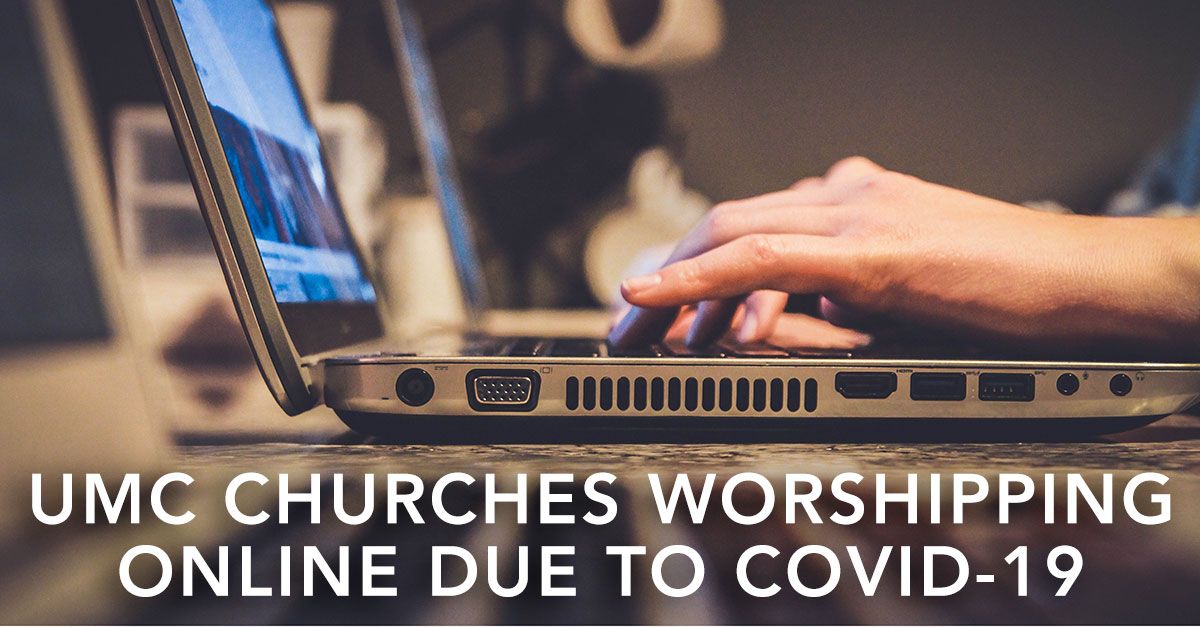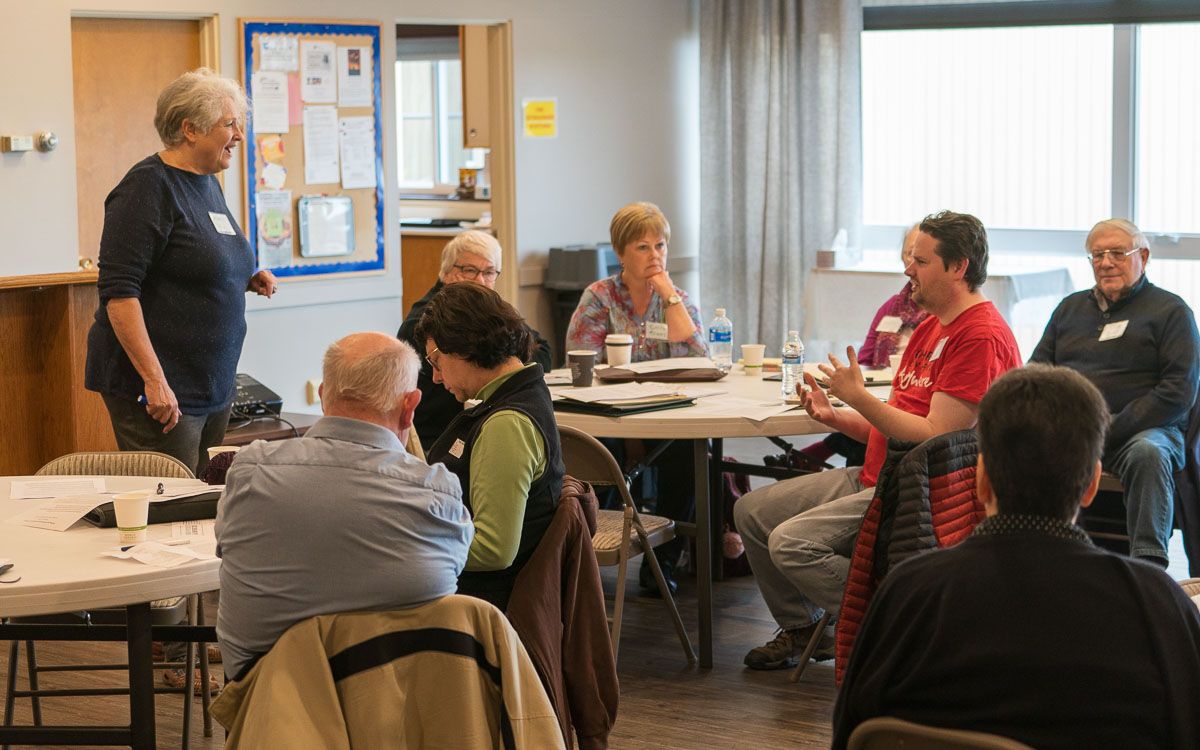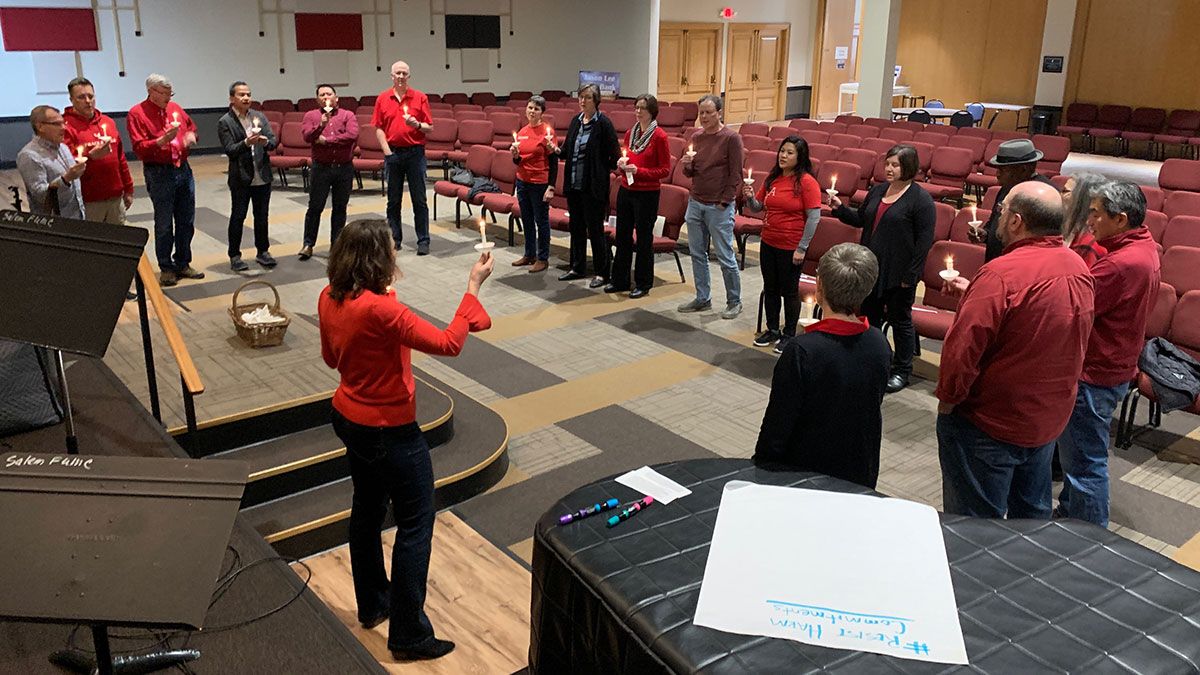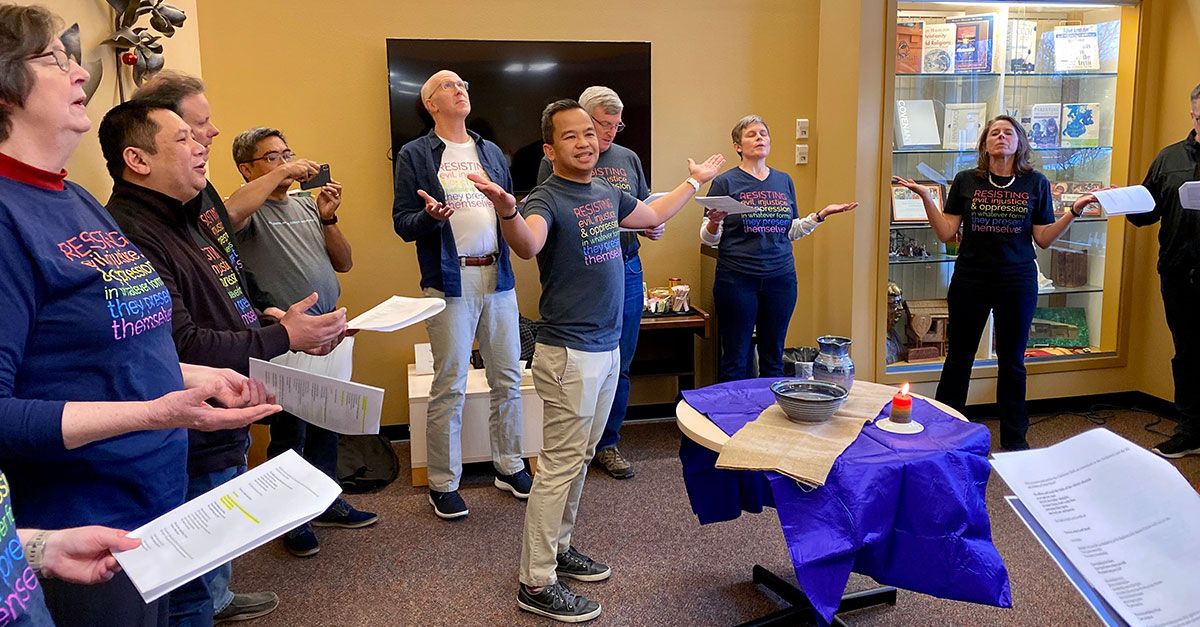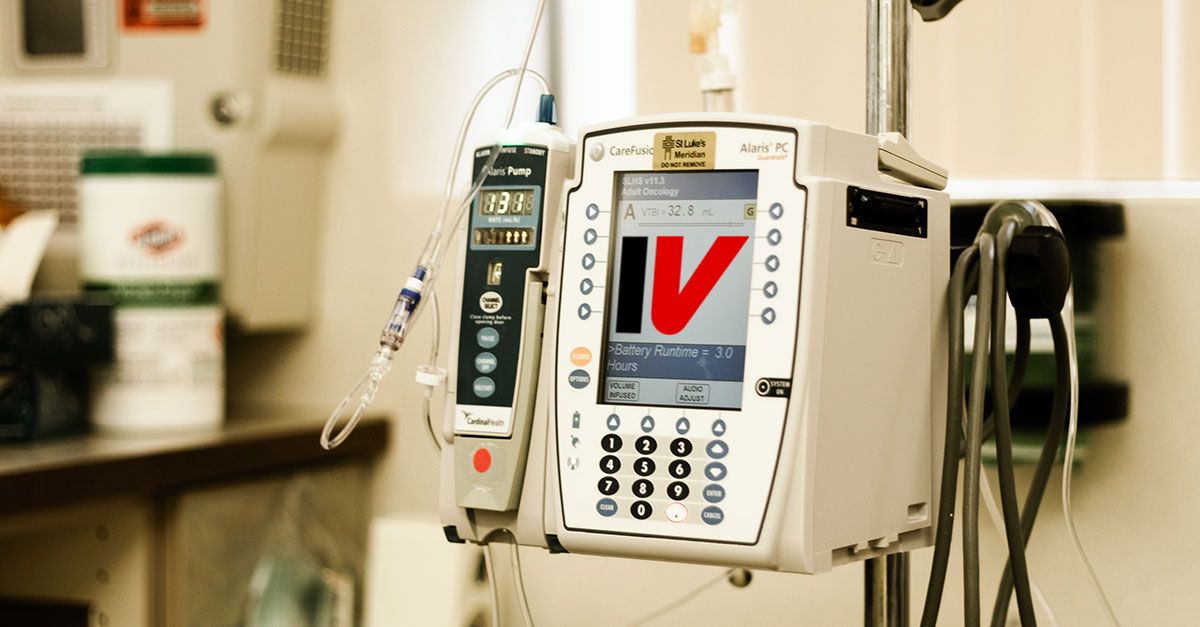Author: Greater NW Communications
Electronic giving allows ministry to continue in ‘isolating’ times
Giving to your local church means giving to your local communities. Passing the offering plate in church on Sunday mornings is a physical and symbolic reminder of Jesus’ commitment to ministering to all those around us.
When church attendance is slowed or completely stopped, though, to prevent the spread of the Coronavirus, offering online giving is a way to continue to feel connected to your local church and its many ministries.
There are several easy steps churches can implement right now to create an online giving platform.
United Methodist Communications offers these suggested resources for online/electronic giving options.
Here are some examples of church “Donate” or “Give” web pages across the Greater Northwest Area of The UMC:
- Here’s the online giving page of St. John’s UMC in Anchorage, AK. They use EasyTithe.
- Here’s the online giving page of Lake Oswego UMC in Lake Oswego, OR. They use Vanco.
- Here’s the online giving page of Tigard UMC in Tigard, OR. They use PushPay.
- Here’s the online giving page of Pioneer UMC in Walla Walla, WA. They use Realm/ACS.
- Here’s the online giving page of Seward UMC in Seward, Alaska. They use SimpleGive.
- Here’s the online giving page of Edmonds UMC, in Seattle, WA. They use FellowshipOne.
- Here’s the online giving page for Magic Valley Ministries in Idaho. They use EasyTithe.
- Some churches use the “Giving” app from the Planning Center group.
Stewardship and finance experts from across the Greater Northwest Area recommend churches use direct bank transfers – electronic funds transferring – so that churches experience fewer fees than using a platform based solely on credit card donations. However, they acknowledge that credit card apps are sometimes easier for those who give.
Management of online donations may seem like a daunting new process for churches, but many who have already implemented such changes said churchgoers appreciate the convenience of online giving. Connect with Dan Wilson-Fey in the Oregon-Idaho Conference at dan@umoi.org or Rik Jamieson for the Alaska or Pacific Northwest Conferences at rjamieson@pnwumc.org if you have questions.
This is an opportune moment for the Church, called to serve in God’s world in new ways. After the Coronavirus is long gone, churches will have established a sustainable, flexible way to continue supporting God’s kin-dom.
United Methodist churches hosting online worship on March 8 #Coronavirus
Staying “Church Connected” when it matters most
Coronavirus en nuestra Comunidad
Dios es nuestro amparo y nuestra fortaleza,
nuestra ayuda segura en momentos de angustia.
Por eso, no temeremos… Salmo 46:1,2
Metodistas Unidos del Gran Noroeste Area,
La noticia de la propagación del Coronavirus (COVID-19) dentro de los Estados Unidos está causando gran preocupación. Si bien esto es particularmente grave en el área de Seattle, los miembros de las comunidades religiosas de todo el país están haciendo preguntas sobre cómo esto podría afectar las formas en que adoran y practican su fe tanto dentro como fuera de sus edificios.
Cada vez es más claro que el virus COVID-19 es un peligro para las personas y nuestras comunidades en el area Gran Noroeste y especialmente en el Condado de King, Washington, donde se propagó sin ser detectado por algún tiempo. La capacidad de evaluar a todas las personas con síntomas continúa rezagada con respecto a la necesidad de esta prueba.
Debido a esto, reunirse como comunidades de fe puede poner a las personas en riesgo de exposición al COVID-19. Estoy animando a seguir una gran cantidad de precauciónes en nuestras iglesias, siguiendo la sabiduría y los consejos del Departamento de Salud del condado de King.
Recomendaciones del departamento de salud pública para residentes e iglesias en los condados de King y Snohomish, en el estado de Washington.
Ayer, la ciudad de Seattle y el condado de King emitieron pautas temporales de salud pública destinadas a frenar la propagación de COVID-19 y reducir el riesgo de exposición. Al describir la situación como “un paisaje cambiante”, el Ejecutivo del Condado de King, Dow Constantine, expreso que se deben evitar las reuniones de grupos grandes de 10 o más personas. Esto luego se ajustó a 50 personas.
Esta mañana, el Distrito de Salud de Snohomish siguió al condado de King al anunciar que también está recomendando evitar las reuniones innecesarias de grupos grandes de más de 50.
Como su Obispa, solicito encarecidamente que los pastores de iglesias y otros ministerios dentro del condado de Seattle y King sigan las recomendaciones del Departamento de Salud Pública. Estas pautas, sujetas a cambios a medida que la situación evoluciona, definen las poblaciones vulnerables, fomentan las prácticas seguras en nuestros entornos de trabajo, limitan el tamaño de las reuniones públicas, ofrecen orientación para las escuelas y las personas enfermas, y dan consejos a quienes buscan mantenerse saludables.
Actualmente, la orientación del Departamento de Salud Pública significa que se les pide a las iglesias que no reúnan a grandes grupos de personas para adoración, conciertos o comidas compartidas. Además, la gravedad de la situación significa que deberiamos posponer la celebración de la comunión hasta fin de mes y prestar especial atención a la limpieza de nuestras instalaciones. Para muchas congregaciones en los condados de King y Snohomish, estas recomendaciones son una invitación a encontrar otras formas de estar en oración y relacionarse entre ellos.
Recomendaciones del Departmento de salud pública para iglesias fuera de los condados de King y Snohomish, Washington.
Si vive o trabaja, o está involucrado en una iglesia fuera del condado de King o Snohomish, le recomiendo que comience ahora a desarrollar planes para identificar y preservar los ministerios de su iglesia local cuando COVID-19, o algún otro desastre , llega a su pueblo.
La Guía Provisional para Comunidades de Fe del CDC se publicó esta semana y cada líder debe tomarse el tiempo de revisarla. Una lista de producida hace varios años para preparar a las comunidades religiosas para una pandemia de gripe puede ser una guía útil.
Aquellos que hayan recibido el programa Conectando Vecinos producido por UMCOR pueden ser un recurso para las iglesias que son nuevas en este tipo de trabajo. Una lista de personas capacitadas estará disponible pronto junto con otros recursos en el sitio web del Gran Noroeste area.
Palabra de aliento para todas las Iglesias en el area del Gran Noroeste
Es natural que las personas se pongan ansiosas ante una enfermedad desconocida que no muestra síntomas durante muchos días después de haber infectado a una persona. Este es sin duda un momento de preocupación, y para tomar precauciones, pero no es el momento del pánico
Cuando la salud y la vida están en juego, las organizaciones deben cooperar con la última información recibida y deben recibir direccion de los departamentos de salud estatales y del condado y los Centros para el Control y la Prevención de Enfermedades (CDC) y la Organización Mundial de la Salud (OMS).
Hemos creado una página en el sitio web del Gran Noroeste area que proporciona un fácil acceso a estos sitios y hemos creados enlaces de varios recursos específicos que estaran disponibles para las iglesias en los próximos días.
Es en momentos como estos que las personas de fe se llenan de coraje de persistencia y confianza en Dios. Es hora de hacer todo lo posible para promover la salud y el bienestar y asegurarnos de que nosotros y las personas en los círculos de nuestro cuidado estén seguros y tengan lo que necesitan mientras vivimos esta temporada de enfermedad.

Obispa Elaine JW Stanovsky
Cambios en Practicas para la Oficina de la Conferencia del PNW

En respuesta a la recomendación de Seattle y el departamento del salud del condado King, los empleados que trabajan en la Oficina de la Conferencia del Noroeste del Pacífico tienen la facultad discreta de trabajar desde sus casas hasta finales de marzo. La oficina no se está cerrando, pero el número de empleados que trabajaran desde la oficina de la conferencia será menor.
Esperamos que esto nos permita ayudar y asistir a las iglesias locales según sea necesario, le pedimos su gracia mientras nos adaptamos a esta medida.
Tenemos la intención de seguir esta guía para el mes de marzo, pero evaluaremos semanalmente y realizaremos ajustes a medida que sigamos vigilando de cerca la situación. Si tiene previsto asistir a una reunión en la Oficina de la Conferencia de PNW durante este período de tiempo, póngase en contacto con la persona encargada de la reunion. Cuando sea práctico, trasladaremos las reuniones a Zoom para limitar el viaje de las personas al condado de King. Algunas reuniones también pueden posponerse o cancelarse.
Worship in the midst of an outbreak
Greater NW Area Lay Leaders gather to discuss common challenges, opportunities
Greater NW Cabinet continues to #ResistHarm with MLK reflection
Greater Northwest Area Cabinet begins 2020 with pledge to Resist Harm as it continues to seed a vital, more inclusive church
By Patrick Scriven
Even as members of the Greater Northwest (GNW) Area Cabinet absorbed the implications of the proposed Protocol of Reconciliation & Grace Through Separation, they recommitted themselves to resisting elements of the Traditional Plan that took effect January 1. Meeting for the first time in 2020 last week, they joyfully reaffirmed their baptisms, pledging together to resist harm as they provide leadership to the Area.
Last November, the bishops of the Western Jurisdiction issued their Safe Harbor Declaration, explicitly refusing to implement the new provisions and prohibitions of the Traditional Plan. The GNW Area Cabinet welcomed this statement at the time and continues its move forward with the clear guidance it provides.
While the Protocol mentioned above includes a moratorium against the filing of charges against LGBTQ+ clergy, and those performing same-gender weddings, if passed, it would only create a pathway down which full inclusion could be reached. Stopping the harm is only one step down the path.
Both the Cabinet and the GNW Guiding Coalition are continuing to plan for a future of United Methodism in the Northwest that fully includes LGBTQ+ persons in the life of the Church. Additionally, they are continuing to learn and to foster practices, each time they meet, that will help the Area to center voices that are younger and more diverse, recognizing that there is both wisdom and vitality around a table with distinct perspectives.
The GNW’s Innovation Vitality Team offered the Cabinet an update on projects that are underway across the Area, work that includes both New projects (new church starts or new campus/multisite) and Vitality projects (existing church where an identified planter/innovator is appointed). Of the 37 supported projects, 20 (54%) are led by leaders of color.
Rev. Kathy Neary provided an update on her work with smaller congregations in the PNW Conference, sharing one of her insights this week on the PNW News Blog. The GNW Cabinet also discussed the promising work happening in rural areas through the Rural Church Engagement Initiative. Lynn Egli provides a short progress report you can read here.
Continuing its work of assessing and preparing for the leadership needs of GNW Area churches and ministries, the Cabinet finalized its initial list of Clear Appointment Openings. The practice of sharing Clear Openings allows clergy the opportunity to express an interest in a particular appointment while also allowing them to share their gifts and calling with the Cabinet as the discernment process begins.

Plans were also finalized at the meeting for the calling of a Special Session of the Alaska United Methodist Conference on February 22 in Anchorage to ask the 2020 General Conference to discontinue its status as a missionary conference. The Alaska Conference will also vote to petition the Western Jurisdictional Conference to provide affiliation and oversight, possibly as a mission district of another annual conference.
The Conference Treasurers provided the Cabinet with an end of year report on the apportionment giving of the Area’s three conferences. Apportionment receipts for the Alaska Conference reached 84.7% in 2019, down 2.03% from 2018; Oregon-Idaho Conference receipts reached 77.9% in 2019, down 5.4% from 2018; Pacific Northwest Conference receipts reached 93%, up .21% from 2018.
With the Cabinet meeting concluding late on Saturday, Cabinet members visited area churches for worship the following day. Twelve members were also able to attend parts of the UMC LEAD event that began later that day in Seattle, Washington. Bishop Stanovsky offered a greeting to attendees of the LEAD event, offering a word of encouragement and appreciation for The United Methodist leaders, many of whom had traveled across the country to participate.
Patrick Scriven serves as Director of Communications and Young People’s Ministries for the Pacific Northwest Conference of The United Methodist Church.

